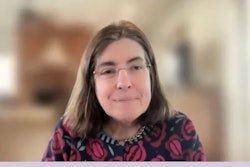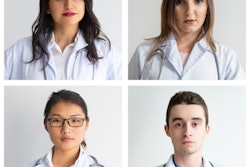
Women and members of minority racial and ethnic groups continue to be underrepresented in U.S. radiology, according to the 2021 American College of Radiology (ACR)/Radiology Business Management Association (RBMA) Workforce Survey.
This trend continues despite increased awareness that "a diverse health care workforce is essential to providing equitable and culturally competent care to an increasingly diverse population," wrote a team led by Sherry Wang of the Mayo Clinic, in Rochester, MN. The findings were published August 4 in the Journal of the American College of Radiology.
Wang's group included information from 1,702 survey responses from ACR and RBMA members that was conducted between October and November 2021; participants were asked about practice leadership, part-time versus full-time work, subspecialization, and retirement, and the team further analyzed the collected data for age, race, ethnicity, and gender.
The authors found the following:
- Since the 2019 survey, there has been a slight increase in female representation in radiology, at 28% compared with 23% in 2018.
- Women account for 21% of all physician leaders, despite the fact that they comprise 28% of practicing radiologists. They are underrepresented in every practice type, according to the report.
- Only 2% of radiology faculty is Black, compared with 10% of medical school graduates and 14% of the general population.
- Only 5% of radiology faculty is Hispanic, compared with 12% of medical school graduates and 19% of the general population.
- Native Americans account for less than 1% of the physician workforce, although they make up 3% of the U.S. population.
- 60% of radiologists are white, and 72% are men between the ages of 40 and 65.
- Nonbinary, transgender, and other gender types make up 1% of academic radiologists and 5% of teleradiologists.
- Almost 90% of radiologists are full-time.
More work to diversify radiology is needed, the team wrote, and that could be accomplished by increased exposure for medical students to specialties.
"[Our] findings demonstrate that there is still room in the house of radiology to further increase diversity of gender, race, and ethnicity," the authors noted. "In particular, early exposure of medical students to medical specialties is important in influencing career choice, and radiologist diversity in this setting is likely to be impactful as these students choose a future specialty. Exposure to a diverse gender and ethnic radiology team may contribute to more diverse groups of successful radiology residency candidates."
The complete report can be found here.



















